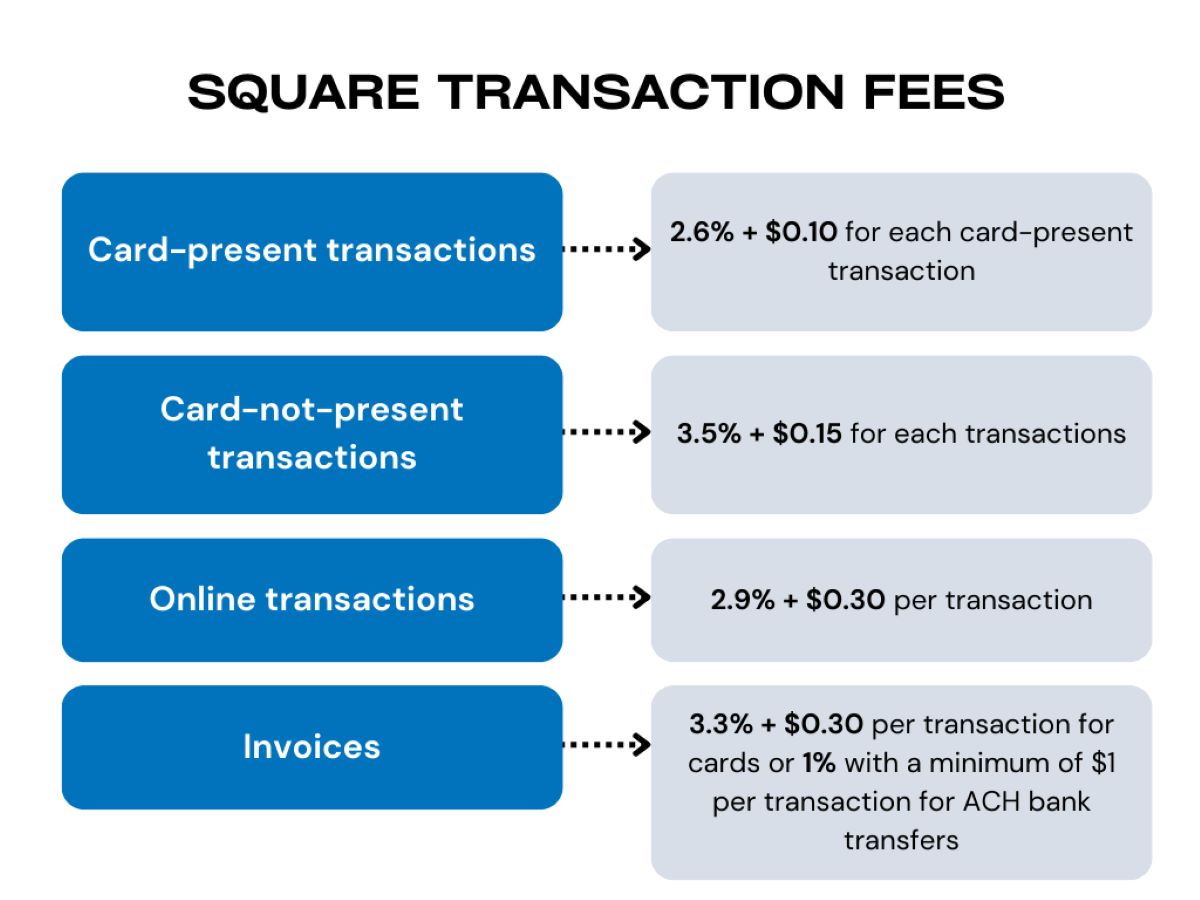

Finance
What Is The Benefit Principle Of Taxation?
Published: November 2, 2023
Discover the principles of taxation and understand the benefits of applying the finance-focused benefit principle. Explore how this principle ensures fairness and efficiency in taxation.
(Many of the links in this article redirect to a specific reviewed product. Your purchase of these products through affiliate links helps to generate commission for LiveWell, at no extra cost. Learn more)
Table of Contents
- Introduction
- Definition of the Benefit Principle of Taxation
- Principles behind the Benefit Principle of Taxation
- Application of the Benefit Principle of Taxation
- Advantages of the Benefit Principle of Taxation
- Criticisms and Limitations of the Benefit Principle of Taxation
- Comparison with Other Principles of Taxation
- Examples of the Benefit Principle of Taxation in Practice
- Conclusion
Introduction
The Benefit Principle of Taxation is an important concept in the field of finance that seeks to ensure fairness and equity in the distribution of public financial burdens. This principle states that individuals or groups who benefit from public goods and services should bear the costs associated with them through taxation.
At its core, the Benefit Principle acknowledges that government expenditures are not evenly distributed among the population. Some individuals or groups may receive more benefits from public goods and services, such as infrastructure, healthcare, education, and security, than others. Therefore, it is considered fair for those who derive greater benefits to contribute more toward these public expenditures.
The concept of the Benefit Principle dates back to the 18th-century economist Adam Smith, who argued that taxes should be imposed in proportion to the benefits received from government activities. This principle serves as a guiding principle in the design and implementation of tax systems worldwide.
The Benefit Principle is based on the progressive nature of taxation, which means that tax rates may increase as income or benefits increase. This ensures that individuals or groups with higher incomes or greater benefits contribute a larger portion of their income or wealth towards the provision of public goods and services.
In this article, we will explore the principles behind the Benefit Principle of Taxation, discuss its application in different contexts, analyze its advantages and criticisms, compare it with other principles of taxation, and provide examples of its implementation in practice.
Definition of the Benefit Principle of Taxation
The Benefit Principle of Taxation is a principle in public finance that states that individuals or groups who benefit from public goods and services should bear the costs associated with them through taxation. In other words, those who receive the most benefits from government expenditures should contribute the most towards funding those expenditures.
Under this principle, the amount of taxes paid by an individual or group is determined by the extent to which they benefit from public goods and services. For example, if an individual resides in an area with well-maintained roads, public parks, and a good education system, they are considered to receive a higher level of benefit and, therefore, should pay a larger share of taxes.
The Benefit Principle can be applied in various ways, depending on the specific context and the nature of the benefits received. It can be used to determine the allocation of taxes for the funding of infrastructure projects, healthcare systems, social programs, and other government expenditures.
One important aspect of the Benefit Principle is that it focuses on the individual’s ability to pay taxes based on the benefits they receive, rather than solely on their income or wealth. This means that even individuals with lower incomes can contribute a fair share of taxes if they receive a commensurate level of benefits from public goods and services.
It is important to note that the Benefit Principle does not imply a one-to-one relationship between payment of taxes and the exact amount of benefits received. Rather, it provides a guiding principle for determining the overall fairness and equity of tax systems by considering the extent of benefit derived from public expenditures.
By implementing the Benefit Principle, societies strive to achieve a fair and equitable distribution of financial burdens, ensuring that those who benefit the most from public goods and services contribute their fair share towards funding them.
Principles behind the Benefit Principle of Taxation
The Benefit Principle of Taxation is grounded in several key principles that govern its application and ensure fairness in the distribution of tax burdens. These principles provide a framework for determining the extent to which individuals or groups benefit from public goods and services, and subsequently, their responsibility for funding them through taxation.
1. Cost-Benefit Analysis: The Benefit Principle is based on the concept of cost-benefit analysis, which evaluates the costs and benefits associated with public goods and services. It considers the tangible and intangible benefits that individuals or groups receive, such as improved infrastructure, a safer environment, access to quality education and healthcare, and a well-functioning legal system. By assessing the balance of costs and benefits, the tax burden can be allocated proportionally to those who receive the most benefits.
2. Ability to Pay: While the Benefit Principle focuses on the benefits derived from public goods and services, it also takes into account the ability to pay taxes. This means that individuals or groups with higher incomes or greater wealth, who have the capacity to contribute more towards public expenditures, are expected to bear a larger portion of the tax burden. This principle ensures that the tax system remains progressive and avoids placing an undue burden on those with limited financial resources.
3. Horizontal Equity: The Benefit Principle aims to achieve horizontal equity, which means that individuals or groups in similar circumstances should be treated equally in terms of their tax obligations if they receive similar benefits. This principle ensures that individuals who derive similar advantages from public goods and services contribute proportionally to their respective levels of benefit, regardless of other factors such as income or wealth.
4. Vertical Equity: Vertical equity is another principle underlying the Benefit Principle of Taxation. It recognizes that individuals or groups with higher incomes or greater benefits should contribute a larger proportion of their income or wealth towards funding public goods and services. This principle helps to address income inequality and ensures that the tax burden is distributed in a way that promotes social and economic fairness.
By adhering to these principles, the Benefit Principle of Taxation seeks to establish a tax system that is based on fairness, where individuals or groups who receive higher benefits contribute a proportionate share of their resources towards funding public expenditures. These principles help create a sense of equity and accountability in tax systems and promote economic stability and social welfare.
Application of the Benefit Principle of Taxation
The Benefit Principle of Taxation can be applied in various contexts to ensure that individuals or groups who benefit from public goods and services contribute their fair share towards funding them. Let’s explore some areas where this principle is commonly utilized:
1. Infrastructure Development: Governments often use the Benefit Principle to allocate tax revenues for infrastructure projects such as roads, bridges, and public transportation systems. Individuals or businesses that benefit directly from these infrastructure developments, such as commuters or companies relying on efficient transportation, are expected to contribute more towards their construction and maintenance.
2. Education and Healthcare: The Benefit Principle can be applied in the funding of education and healthcare systems. Individuals who receive higher levels of education or utilize healthcare services more frequently may be required to pay higher taxes to support these public services. This ensures that the costs are proportionate to the benefits received.
3. Security and Defense: Countries rely on security and defense systems to protect their citizens and uphold national sovereignty. The Benefit Principle can be used to determine tax contributions based on the level of security and defense benefits enjoyed by individuals or businesses. Those located in areas with higher security risks may shoulder a larger portion of the tax burden.
4. Social Programs: Governments provide various social programs to support vulnerable populations, such as welfare assistance or unemployment benefits. The Benefit Principle can guide the allocation of taxes to fund these programs. Individuals who benefit from these social safety nets, either temporarily or long-term, may contribute a proportionate share of their income or wealth to sustain these programs.
It is important to note that the implementation of the Benefit Principle requires careful analysis and consideration of various factors. Determining the extent of benefit received and the corresponding tax burden can be challenging. Governments must strike a balance between fairness and practicality to ensure that the principle is applied effectively.
Additionally, the Benefit Principle of Taxation can be incorporated into tax systems through different mechanisms. Progressive taxation, where tax rates increase as income or benefit levels rise, is one common approach. Other methods, such as user fees or tolls, can be implemented to directly link the cost of public goods and services to their usage.
By applying the Benefit Principle of Taxation, governments strive to ensure that individuals or groups who derive greater benefits from public goods and services contribute an appropriate share towards their provision. This promotes fairness in the distribution of financial burdens and enhances the overall stability and welfare of societies.
Advantages of the Benefit Principle of Taxation
The Benefit Principle of Taxation offers several key advantages that make it a widely recognized and utilized principle in tax systems around the world. Let’s explore some of its main benefits:
1. Equity and Fairness: One of the primary advantages of the Benefit Principle is its inherent fairness. It ensures that individuals or groups who benefit the most from public goods and services contribute proportionally towards their funding. By linking the tax burden to the level of benefit received, the principle promotes equity in the distribution of financial obligations.
2. Alignment of Costs and Benefits: The Benefit Principle ensures a closer alignment between the costs and benefits associated with public goods and services. Those who directly benefit from these government expenditures bear a larger share of the tax burden. This linkage enhances transparency and accountability by making individuals or groups aware of the costs they are contributing towards the benefits they receive.
3. Promotion of Public Goods and Services: By requiring individuals to contribute towards the funding of public goods and services according to their level of benefit, the Benefit Principle helps sustain and improve these essential offerings. It incentivizes governments to efficiently allocate resources and strive for the provision of high-quality public goods that meet the needs of their citizens.
4. Progressive Nature: The Benefit Principle aligns with the progressive nature of taxation, where tax rates increase as income or benefit levels rise. This progressive structure helps address income inequality by ensuring that those with higher incomes or greater benefits contribute a larger proportion of their resources. It promotes a more equitable distribution of the tax burden and supports social and economic justice.
5. Customization to Individual Circumstances: The Benefit Principle allows for customization to individual circumstances. It recognizes that not all individuals or groups benefit equally from public goods and services, and accordingly, their tax obligations can be tailored to reflect their specific situation. This flexibility enhances the fairness of the tax system and avoids placing undue burdens on those with limited means.
6. Economic Efficiency: The Benefit Principle promotes economic efficiency by ensuring that resources are allocated based on the level of benefit received. When individuals or groups who benefit the most contribute proportionally to the costs, it encourages a more efficient allocation of resources. In turn, this can lead to increased productivity, improved economic outcomes, and a more efficient use of public funds.
Overall, the Benefit Principle of Taxation offers numerous advantages, including equity, alignment of costs and benefits, promotion of public goods, progressive nature, customization, and economic efficiency. By incorporating this principle into tax systems, governments can foster a fair and sustainable financial framework that supports the welfare and development of their societies.
Criticisms and Limitations of the Benefit Principle of Taxation
While the Benefit Principle of Taxation has its advantages, it is not without its criticisms and limitations. Let’s explore some of the main concerns raised regarding this principle:
1. Difficulty in Measuring Benefits: One of the primary challenges of the Benefit Principle is determining the precise level of benefits received by individuals or groups. It can be difficult to quantify and assign a specific value to the intangible benefits derived from public goods and services. This can lead to subjective judgments and potential disputes over the proper distribution of the tax burden.
2. One-Size-Fits-All Approach: The Benefit Principle assumes that all individuals or groups within a given category receive the same level of benefits. However, this may not always be the case. People have varying needs, preferences, and circumstances, which result in different levels of benefit derived from public goods. Applying a one-size-fits-all approach based on broad categories may overlook individual differences and lead to inequitable outcomes.
3. Regressive Effects: Although the Benefit Principle is intended to be progressive, certain applications of the principle, particularly in user fees or consumption taxes, can have regressive effects. Lower-income individuals may be disproportionately burdened by these taxes, even if they derive minimal benefits from the associated goods or services.
4. Exclusion of Externalities: The Benefit Principle focuses primarily on direct benefits received by individuals or groups. However, it may not consider externalities, which are unintended consequences or spillover effects affecting individuals beyond those directly benefiting from public goods and services. Ignoring externalities can lead to underestimation or exclusion of certain costs and benefits, potentially resulting in an unfair allocation of the tax burden.
5. Complexity and Administrative Burden: Implementing the Benefit Principle can be administratively complex, requiring detailed evaluation and calculations to determine the appropriate level of tax contribution. This complexity may lead to higher administrative costs and increased compliance burden for both taxpayers and government agencies.
6. Disincentive for Economic Growth: Critics argue that the Benefit Principle, particularly when taxes are levied based on benefits received, can create disincentives for individuals or businesses to pursue economic growth and take risks. It may discourage entrepreneurship and investment, limiting the potential for economic expansion and innovation.
Despite these criticisms and limitations, the Benefit Principle of Taxation remains an important tool for promoting equity and fairness in tax systems. Governments must carefully consider these concerns and address them through careful implementation and complementary policies to ensure the effectiveness and sustainability of the tax framework.
Comparison with Other Principles of Taxation
The Benefit Principle of Taxation is one of several principles that can guide the design and implementation of tax systems. Let’s compare it with other common principles of taxation:
1. Ability-to-Pay Principle: The Ability-to-Pay Principle suggests that individuals should contribute to public finances based on their ability to pay, typically related to their income or wealth. Unlike the Benefit Principle, which focuses on the benefits received, the Ability-to-Pay Principle emphasizes the notion of fairness based on an individual’s capacity to contribute. While both principles aim for equity, the Ability-to-Pay Principle considers a broader perspective that takes into account socio-economic disparities.
2. Horizontal Equity: Horizontal Equity refers to treating individuals in similar circumstances equally in terms of their tax liability. It seeks to ensure that individuals facing the same factors are not treated differently solely based on arbitrary distinctions. The Benefit Principle, on the other hand, focuses on establishing an equitable distribution of financial burdens based on the level of benefits derived. Horizontal Equity broadens the perspective beyond benefit considerations and focuses on treating individuals with similar circumstances equally.
3. Vertical Equity: Vertical Equity focuses on treating individuals with different levels of income or wealth differently to address income inequality and promote social justice. The Benefit Principle, in certain contexts, aligns with Vertical Equity by imposing higher tax burdens on those with greater income or benefits. However, the Benefit Principle is narrower in scope, as it primarily considers the benefits received from public goods and services rather than solely income or wealth levels.
4. Efficiency: Efficiency refers to the effectiveness and productivity of the tax system. While the Benefit Principle seeks to achieve fairness and equity, efficiency is an important consideration as well. Tax systems should be designed in a way that minimizes economic distortions and administrative burdens. Achieving both fairness and efficiency requires a careful balance between different principles, considering the trade-offs and unintended consequences of each.
It is important to note that these principles are not mutually exclusive, and tax systems often incorporate elements from multiple principles to achieve a balance between fairness, efficiency, and sustainability. Governments must tailor their tax systems based on their specific socio-economic context and policy objectives, considering a combination of principles to achieve optimal outcomes.
While the Benefit Principle focuses on the connection between benefits received and tax contributions, other principles take a broader view of fairness, income redistribution, and economic efficiency. By understanding and incorporating various principles, policymakers can design tax systems that promote equity, incentivize economic growth, and meet the needs of their society.
Examples of the Benefit Principle of Taxation in Practice
The Benefit Principle of Taxation is applied in various ways across different countries and jurisdictions. Here are some examples of how this principle is put into practice:
1. User Fees: Many governments levy user fees to fund specific public goods and services. For instance, tolls on highways or bridges are collected from individuals or businesses directly benefiting from their use. These fees are based on the principle that those who utilize the infrastructure bear the costs associated with its maintenance and operation.
2. Property Taxes: Property taxes are levied based on the value of real estate owned by individuals or businesses. The rationale behind property taxes is that property owners benefit from a range of public services, such as local infrastructure, schools, and police protection. The taxation amount is calculated in proportion to the value of the property, further aligning with the Benefit Principle.
3. Fuel Taxes: Many countries impose taxes on gasoline and other fuels to fund transportation infrastructure and related services. The Benefit Principle is utilized here, as those who benefit from the network of roads and transportation systems bear the costs through increased fuel prices. The tax revenue collected is then directed towards maintaining and improving the transportation infrastructure for the benefit of the users.
4. Healthcare System Financing: Some countries employ the Benefit Principle in funding their healthcare systems. Individuals who earn higher incomes or have more substantial benefits, such as broader coverage or access to specialized treatments, can be subject to higher healthcare taxes or insurance premiums. This approach ensures that those who benefit more from the healthcare system contribute a larger share of its funding.
5. Education Funding: In certain jurisdictions, education funding is linked to the Benefit Principle. Individuals living in areas with high-quality schools may face higher property taxes or education levies. By tying the funding of education to local property values, this approach aims to ensure that those who benefit from superior educational opportunities contribute proportionally more towards their provision.
These examples illustrate how the Benefit Principle of Taxation can be put into practice in various domains, such as infrastructure, healthcare, education, and transportation. By aligning tax burden with the benefits received, governments aim to promote fairness and accountability in the distribution of public goods and services.
It is worth noting that the specific implementation of the Benefit Principle can vary across jurisdictions, reflecting the unique needs and priorities of each society. Governments carefully consider the specific context and aim to strike a balance between fairness, economic efficiency, and administrative feasibility when applying this principle in their tax systems.
Conclusion
The Benefit Principle of Taxation serves as a fundamental principle in the field of public finance, aiming to ensure fairness and equity in the distribution of tax burdens. By linking tax contributions to the benefits individuals or groups derive from public goods and services, this principle fosters a sense of accountability and fairness in tax systems.
Throughout this article, we have explored the definition, principles, application, advantages, criticisms, and comparison of the Benefit Principle of Taxation. We have seen how it aligns with notions of equity, efficiency, and economic growth, while acknowledging its limitations and potential challenges.
The Benefit Principle acknowledges the diverse needs and circumstances of individuals and groups within a society. It recognizes that not everyone derives the same level of benefit from public goods and services and therefore should not bear an equal burden of taxation.
Implementing the Benefit Principle requires careful consideration of various factors, such as the measurement of benefits, customization to individual circumstances, and the potential for unintended consequences. Policymakers must strike a balance between the principles of fairness, economic efficiency, and administrative feasibility in designing tax systems that effectively incorporate the Benefit Principle.
By embracing this principle, governments can promote a more fair and equitable distribution of financial burdens. The Benefit Principle helps ensure that individuals or groups who benefit more from public goods and services contribute their fair share, supporting the provision of essential infrastructure, education, healthcare, and other public services.
To achieve optimal outcomes, policymakers must continually evaluate and refine their tax systems, taking into account the evolving needs and dynamics of their society. By integrating the Benefit Principle of Taxation with other principles and policies, governments can develop robust and sustainable tax systems that foster economic growth, social welfare, and the overall well-being of their citizens.














